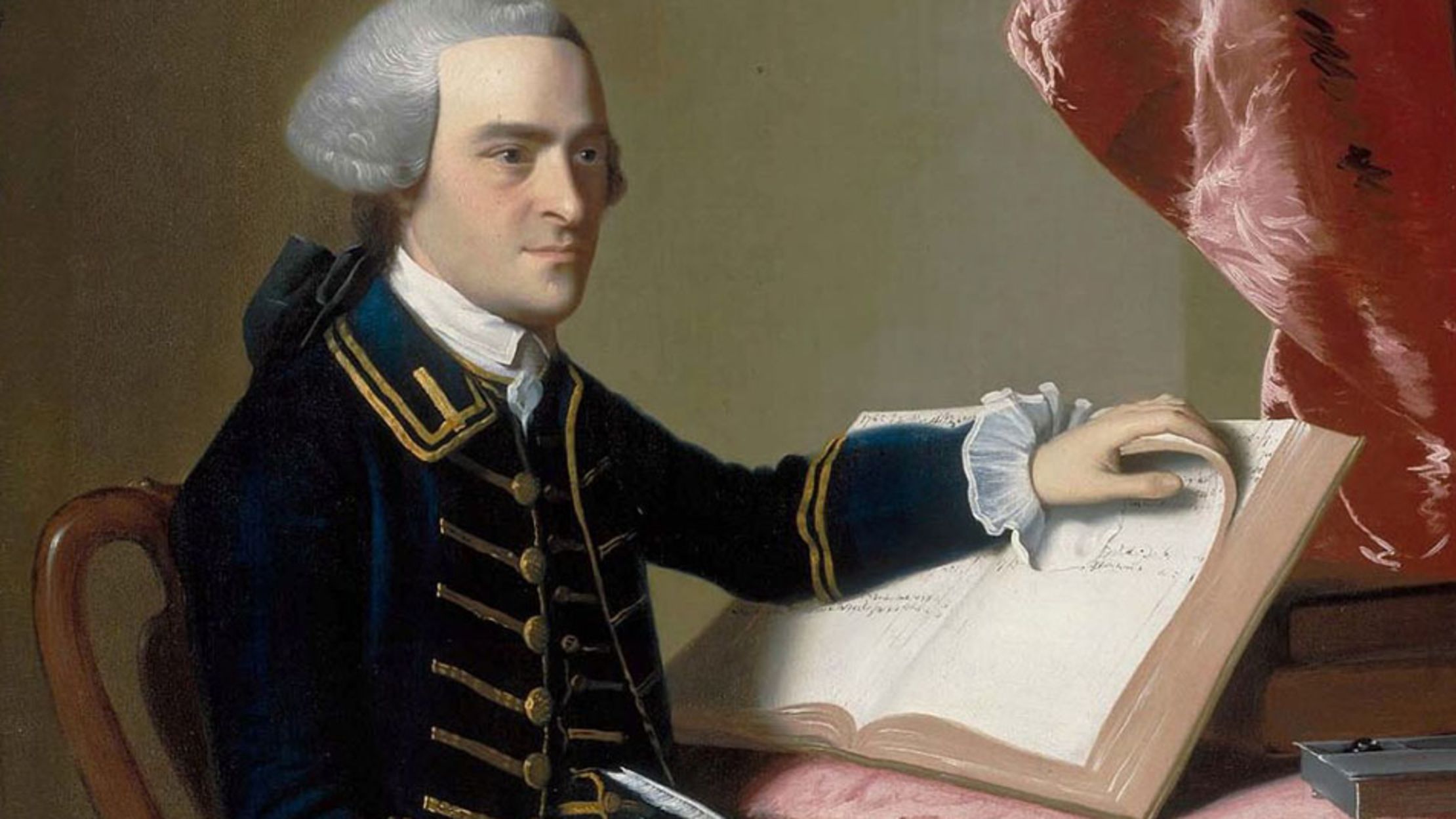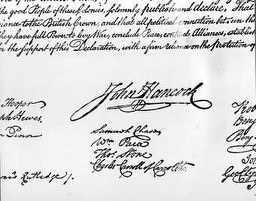"Put your John Hancock right there!"
Many Americans are familiar with this phrase, meaning to inscribe one's signature. They are also familiar with the basic history of it, recalling the famous bold and elaborate inscription of the Declaration of Independence's first signer. Few, however, know the account of the man himself.
 John Hancock was born in 1737 in Braintree, Massachusetts. After graduating from Harvard, he worked with his wealthy uncle for several years, whose wealth and mercantile business he eventually inherited. Hancock was also heavily involved in local and state politics, claiming chairmanship of the Boston town committee that urged removal of British troops after the Boston Massacre.
John Hancock was born in 1737 in Braintree, Massachusetts. After graduating from Harvard, he worked with his wealthy uncle for several years, whose wealth and mercantile business he eventually inherited. Hancock was also heavily involved in local and state politics, claiming chairmanship of the Boston town committee that urged removal of British troops after the Boston Massacre.
At the dawn of revolution in the 1760's, Hancock became a smuggler to avoid the "taxation without representation" of King George. When his ship was confiscated and charges were brought against him, Hancock came into contact with Samuel Adams, who successfully defended him in court. Indeed, the whole of Boston rallied around the merchantman as rumblings of rebellion grew.
Hancock continued his yet-unknown march to independence with inspiring speeches and formal protests against British rule, becoming a champion for independence in Boston.
Among other positions, Hancock shared leadership with Samuel Adams of the Massachusetts Patriots, and was forced to flee with him when warned of British general Gage's intent to seize the colonist's arms and arrest the rebellious leadership. This, of course, was the beginning of The Battle of Lexington-Concord, the first major battle of the American Revolution.
While the war raged, Hancock fought the battle of pen and paper, serving as a member and later president of the Continental Congress, as well as the first governor of Massachusetts. In 1788, he presided over his state's ratification of the Constitution, having become convinced of the document's necessity.

Hancock died serving his ninth term as governor, and was buried in Boston in 1793. This man of great penmanship and even greater patriotism strived his whole life to sustain liberty and resist tyranny. There is little doubt that he would have recognized the need for a Convention of States, and brought his prominent calligraphy to bear.
Be a 21st century patriot, and add your John Hancock to the thousands of others, signing the petition to call a Convention of States.






